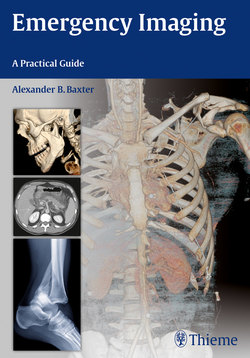Читать книгу Emergency Imaging - Alexander B. Baxter - Страница 97
На сайте Литреса книга снята с продажи.
Оглавление84Emergency Imaging
Approach to Inammatory or Neoplastic Conditions
Suspected inflammatory or neoplastic conditions of the face and neck should be evaluated using postcontrast CT. Because of its anatomic complexity, neck CT in-terpretation is aided by grouping related structures.
Nontraumatic Face/Neck Checklist
Airway and Related Structures
• Nasal cavity
• Nasopharynx
• Oropharynx
• Hypopharynx
• Larynx
• Trachea
• Lung apices
• Esophagus
• Thyroid gland
Soft Tissues and Bones
• Muscles
• Blood vessels
• Lymph nodes
• Cervical spine and skull base
Oral Cavity and Salivary Glands
• Tongue
• Tongue base
• Mandible, maxilla, and dentition
• Floor of mouth
• Submandibular glands
• Parotid glands
Orbits
• Globes
• Muscles
• Optic nerve
• Orbital fat
• Orbital walls
Everything else
• Skull base
• Brain
• Temporal bones
Soft Tissue Survey
• Superficial soft tissues
• Nasal septum
• Sinus contents
• Orbital fat (with attention to any orbital stranding, emphysema, or subperiosteal hematoma)
• Globes
• Optic nerves
• Extra-ocular muscles
• Brain (pneumocephalus, hemorrhage)
Indications for Neck CT Angiogram in Trauma
Blunt neck trauma is associated with clini-cally occult vascular injury in up to 3% of hospitalized patients. Early detection of vascular injury and therapeutic antico-agulation or endovascular occlusion can significantly reduce the incidence of stroke in this group. The Denver Modified Blunt Cerebrovascular Screening Criteria define a high-risk group of trauma patients for whom urgent CT angiographic imaging is indicated:
• Direct signs of vascular injury (hemorrhage, bruit, hematoma)
• Focal neurologic deficit or CT demonstrating acute cerebral infarct.
• Le Fort II or III fracture
• Cervical spine fracture
• Basilar skull fracture involving carotid canal
• Severe brain injury (diuse axonal injury, GCS < 6)
• Hanging injury• Neck contusion
Patients with penetrating injuries who do not undergo immediate surgical ex-ploration should be imaged by CTA or conventional angiography. Typical vascu-lar injuries in both blunt and penetrating trauma include dissection, occlusion, pseu-doaneurysm, and arteriovenous fistula. Urgent CTA should also be considered in patients who present with focal neurologic findings, as vascular dissection with mini-mal or no trauma is an important cause of stroke, particularly in younger adults.
